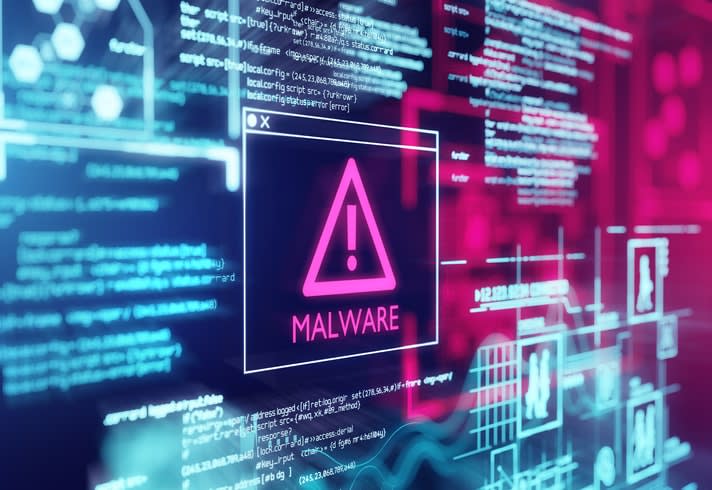How to Find Malware in Your Website
Why Prevent and Thoroughly Remove Malware From Your Site?
For small-to-mid-size businesses (SMBs) and enterprise organizations, finding, removing, and preventing malware is increasingly critical for risk management and digital trust.
- Cybercrime can cost hundreds of thousands of dollars, with 60% of small businesses going out of business within six months of being victimized.
- For large organizations, the total cost of cybercrime for each company increased from US$11.7 million in 2017 to a new high of US$13.0 million, a 12% increase.
Security risks and concerns are rising globally for digital technology.
The Experian Global Fraud and Identity Report, with input from over 5,500 consumers and 500 businesses worldwide, reveals what consumers think of security protocols and gauges how confident businesses can accurately identify their customers.
Key findings from this report include:
- 40% of consumers say their cybersecurity concern has grown in the past year
- 83% of consumers say security is a critical factor when purchasing online
- 58% of consumers have been a victim of online fraud
- Nearly 75% of consumers expect businesses to protect them online
Building trust through digital technology without disruption and protecting visitors from malware on websites are both critically important.

What is Website Malware?
Malware is any piece of software or code with malicious intent, causing damage to a computer, server, client, or computer network.
With website malware, attackers can sneak into a website undetected, steal sensitive customer data, alter a website’s appearance, damage a company’s reputation, and damage their bottom line. Cybercriminals can take control of websites with malware infections.
With mobile payment services, abusing a lost or stolen device for online transactions is a common threat, as well as malware on mobile applications for online transactions.
The three leading Content Management Systems (CMS) in 2018 were: WordPress, Magento, and Joomla!.
WordPress continues to be the leading infected CMS, representing 96.2% of all websites cleaned by Sucuri
Why Do Cybercriminals Infect Websites with Malware?
The top 5 reasons why cybercriminals attack websites are:
- To deface and vandalize webpages
- For spam campaigns
- For phishing email campaigns
- To serve malware such as Trojans and spyware to steal data
- To conduct Distributed Denial of Service (DDoS) attacks
Web attacks can take many forms. They can include form jacking with malicious JavaScript code to steal data from payment cards and payment forms on eCommerce sites. They can also include endpoint attacks and sharing malicious URLs.
Stolen or compromised site data is usually offered in underground marketplaces in the dark web, with sites not indexed or accessible by search engines.”
The latest exploits and stolen sensitive data such as credit cards and IDs are for sale in the dark web. Most malware is transmitted over the dark web and then onto public access sites, so being on the dark web can put you in danger of malware or ransomware.

8 Signs Your Website Has Malware
- Is it defaced or vandalized by the cybercriminal or hacker?
- Does Google display warnings about your website?
- Has your hosting provider disabled your website?
- Have web browsers blacklisted your website?
- Is your website loading speed persistently slower?
- Is your website sending emails on its own?
- Are website visitors redirected to inappropriate websites?
- Are there suspicious files, folders, and code on your website?
If you answer yes to any of these questions, then check for potential malware immediately!
Using Google for Malware Checking
Google uses its Safe Browsing technology to check whether your website is potentially dangerous to visit.
Google’s Safe Browsing technology continuously examines domain names or URLs for malicious content and malware. It also maintains a database of compromised websites.”
Google Malware Checker is free to use. You can also check your website from Google Console via the "Health" menu. If your site has been previously flagged by Google with malware, this will clear once you thoroughly remove the malware from your website.

Malware Scanning Tools for Websites
There are also free versions for scanning tools for malware-infected websites from digital security companies. Here are a couple of examples:
- Sucuri has a free Sucuri SiteCheck where you can enter a URL (e.g., sucuri.net) and the Sucuri SiteCheck scanner will check for known malware, viruses, blacklisting status, website errors, and out-of-date software, and malicious code.
- Qualys Community Edition is a free version of the Qualys Cloud Platform designed for the security community. It’s a cloud-based solution to quickly scan websites for malware, and then provide immediate and automated alerts along with in-depth reporting.
Google blacklists 10,000+ websites every day. With Google’s 30-day ban on website reviews to prevent repeat offenders from distributing malware, cleaning up a hacked site thoroughly is more critical than ever.
Liquid Web also offers several self and fully managed options to help your fight against malware at the server level including compliance scanning, malware scanning, and malware remediation.

Jerry Vasquez
A self-professed pirate captain with two decades of leadership experience, Jerry has led teams from 60+ cooks and chefs to 16 networking engineers. He brings those years of experience to his current role as Product Manager at Liquid Web, focusing on networking and security products. When not working or sleeping, Jerry can usually be found eating and having a good conversation with good people.
Keep up to date with the latest Hosting news.



